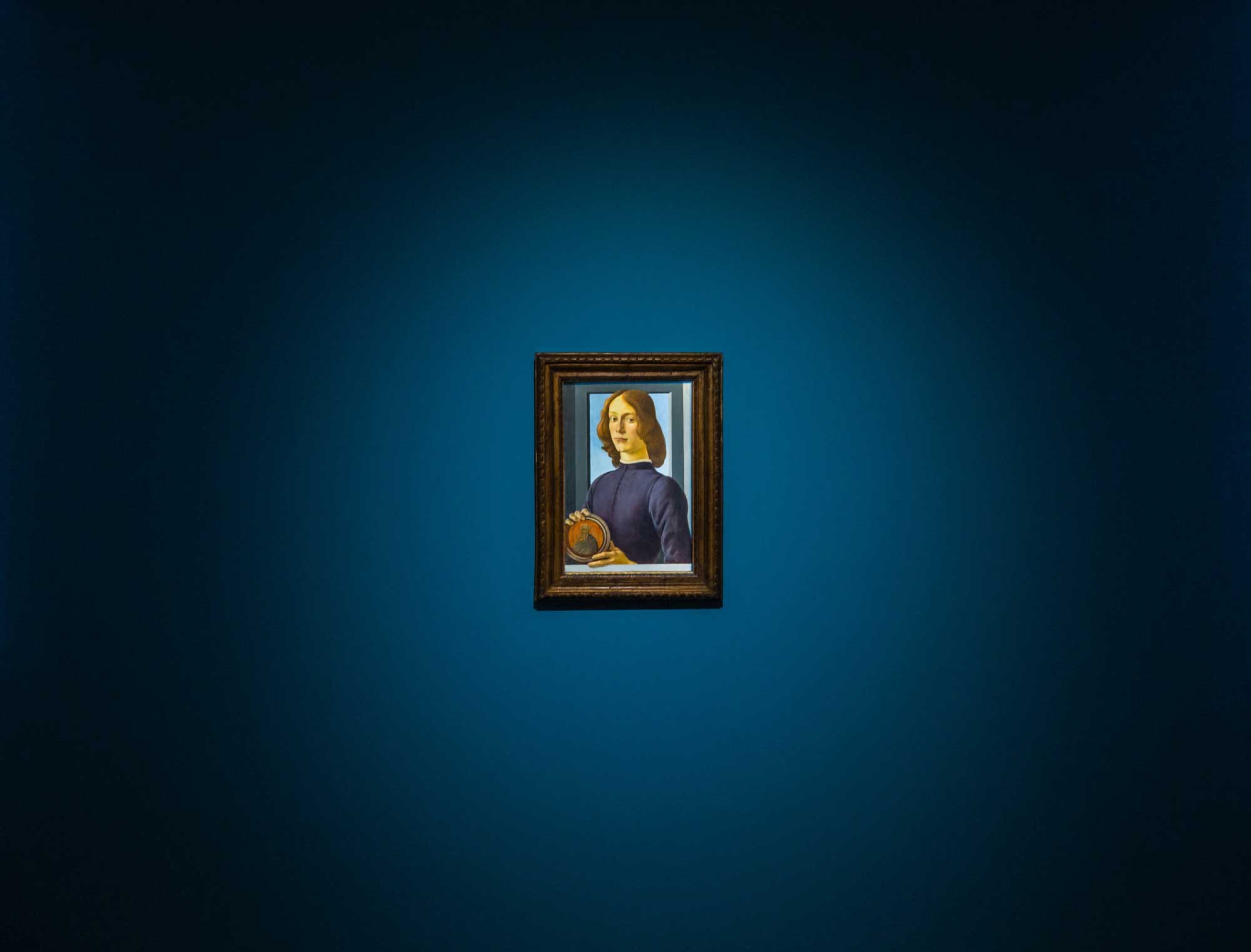
Decoding the Renaissance meanings behind the sitter, the saint and the sky in Sandro Botticelli’s Young Man Holding a Roundel, a highlight of Masters Week New York in January 2021.
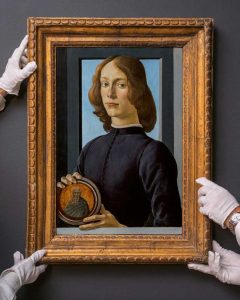
It is part of the magic of certain pictures that they transport you, as if in a time machine, straight back to where and when they were made. In the case of Botticelli’s portrait, Young Man Holding a Roundel, circa 1480, the where is Florence and the when is that vibrant but also vexed phase of the early Renaissance associated with Lorenzo de’ Medici – or Lorenzo the Magnificent, as his contemporaries knew him. Botticelli’s painting is so utterly infused with the spirit of 15th-century Florence that it could have been painted nowhere else.
The young man’s carefully groomed hair, which flows in riverine waves nearly to his shoulders, and his neatly buttoned doublet, flatteringly figure-hugging, betray a distinctly fastidious Florentine fashion sense. In fact he still has a throng of cousins in the city today: there is an entire troop of such self-consciously well dressed and carefully coiffed young men proceeding through Benozzo Gozzoli’s Adoration of the Magi, 1459–60, which is preserved in the Palazzo Medici-Riccardi.
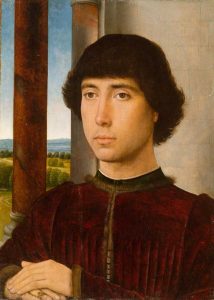
Portraits of single individuals, a relatively new innovation in Botticelli’s day, had their origin in Northern European painting. It was doubtless the example of Flemish masters, such as Hans Memling, who often framed their sitters in windows, that led Botticelli to adopt the same device. But his window is emphatically Florentine. We see no wooden window frame, no panes of leaded glass, but only a plain rectangle of grey pietra serena: the same stone that had been used by Brunelleschi in his Pazzi Chapel and that would be used by Michelangelo in his own Florentine architectural masterpiece, the Laurentian Library staircase. It is the signature colour of Florence: the colour of its bones.
It was also a convention of Flemish portraiture to depict the sitter against a panoramic landscape background. Botticelli did just that in another portrait, now in the Uffizi, in which we see a different young man holding a roundel of Cosimo de’ Medici, with a river and valley behind him. But on this occasion he has eschewed such elaboration, placing his sitter instead against a mere fragment of sky. This too seems distinctively Florentine, in that it demonstrates a preference for simplicity and spareness of composition. Even the colour of the sky is redolent of the city: it is the same shade and tone of blue used so often by Andrea della Robbia and his workshop, in their famous terracottas, to indicate the vault of heaven. In the absence of specific information about the sitter, we may wonder whether this detail was also meant to say something about him as a person. Might this have been Botticelli’s way of suggesting that the young man’s thoughts were directed towards God, rather than this world?
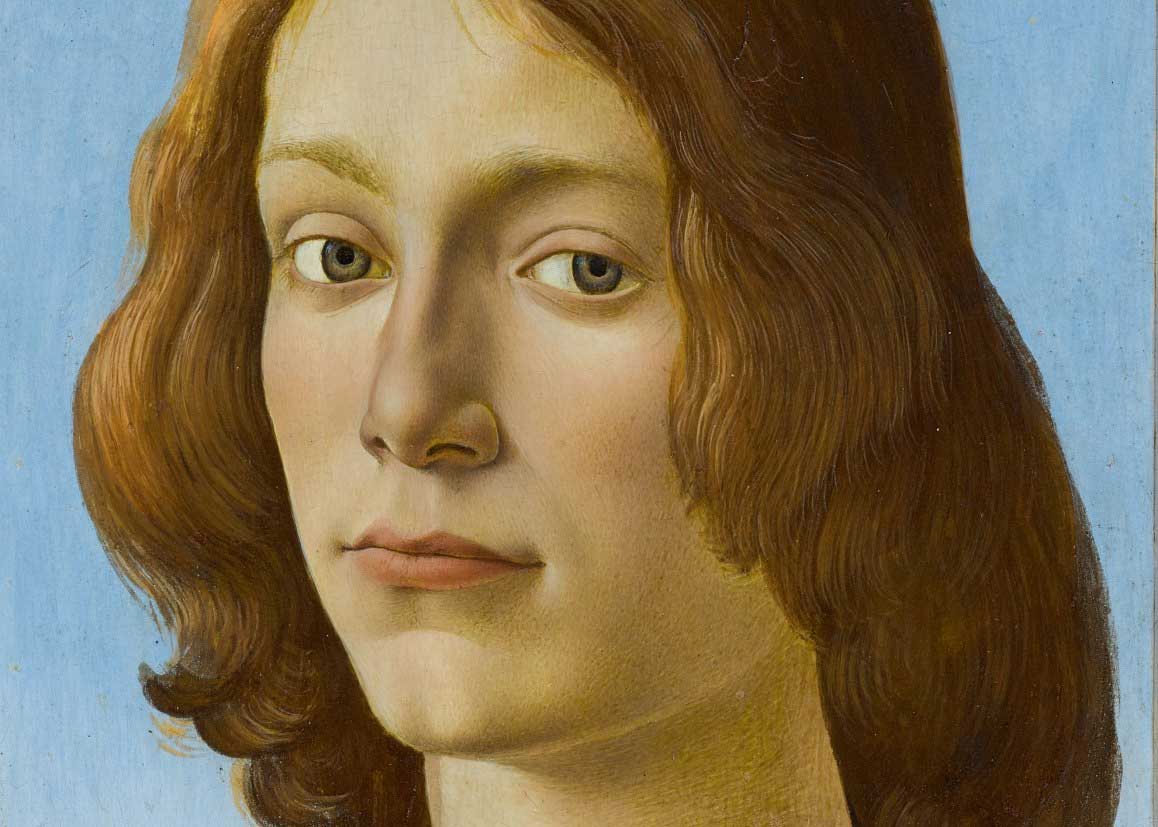
The supposition is strengthened by the unusual detail of the roundel that he holds, namely a 14th-century Sienese gold-ground image of a saint. Botticelli’s young man has the acute gaze and the delicate, slender fingers of a man familiar with books, although whether his milieu was the library or some bank or other mercantile enterprise – Florence being a city of bankers and merchants – is probably something we will never know. The very fact that he had his portrait painted suggests that one way or another he was a member of the Florentine humanist intelligentsia and therefore connected with the circle of Lorenzo the Magnificent. Despite all that, what he holds out for us to see is the hallowed image of a saint, perhaps his name saint, which he cradles as gently as if it were some sacred relic. It is as well to remember that, in the world of the early Renaissance, the new scholarship and interests promoted by the rise of humanism still coexisted – if not always harmoniously – with the fierce urgings of medieval piety.
While it is well known that Botticelli was one of the first Renaissance artists to paint idealised female nudes – drawing on both classical and Christian traditions of art to create a distinctively new type of ideal womanhood, such as can be seen in The Birth of Venus, circa 1485 – his innovative depictions of the naked male figure have attracted rather less attention. This is because they are mostly to be found in a rarely exhibited portfolio of drawings illustrating Dante’s Divine Comedy, now housed in Berlin’s Kupferstichkabinett and originally commissioned by a junior member of Florence’s most prominent family, namely Lorenzo di Pierfrancesco de’ Medici. In a number of these drawings, especially those illustrating Dante’s journey through the circles of hell, we find Botticelli freely inventing a whole series of idealised nude male figures, as if to furnish later generations of Renaissance sculptors with a sourcebook of ideas. At least one of these nudes – in the illustration to Canto XXXI, where Dante encounters the damned giants of pagan antiquity – bears a remarkably close resemblance to Michelangelo’s celebrated monumental sculpture of David, seen from behind. This is not necessarily a coincidence. Giorgio Vasari tells us that the young Michelangelo was a constant presence in the Medici household, and was even treated as a member of the family, so he may well have seen Botticelli’s drawings. He seems to me to have taken something from their spirit, as well as their appearance. Michelangelo’s nudes are classical in inspiration but remain infused with a thoroughly Christian sense of the body as a prison, which the soul must struggle to transcend. That same tension, between Christian piety and pagan sensuality, is anticipated in Botticelli’s suffering and struggling male nudes.
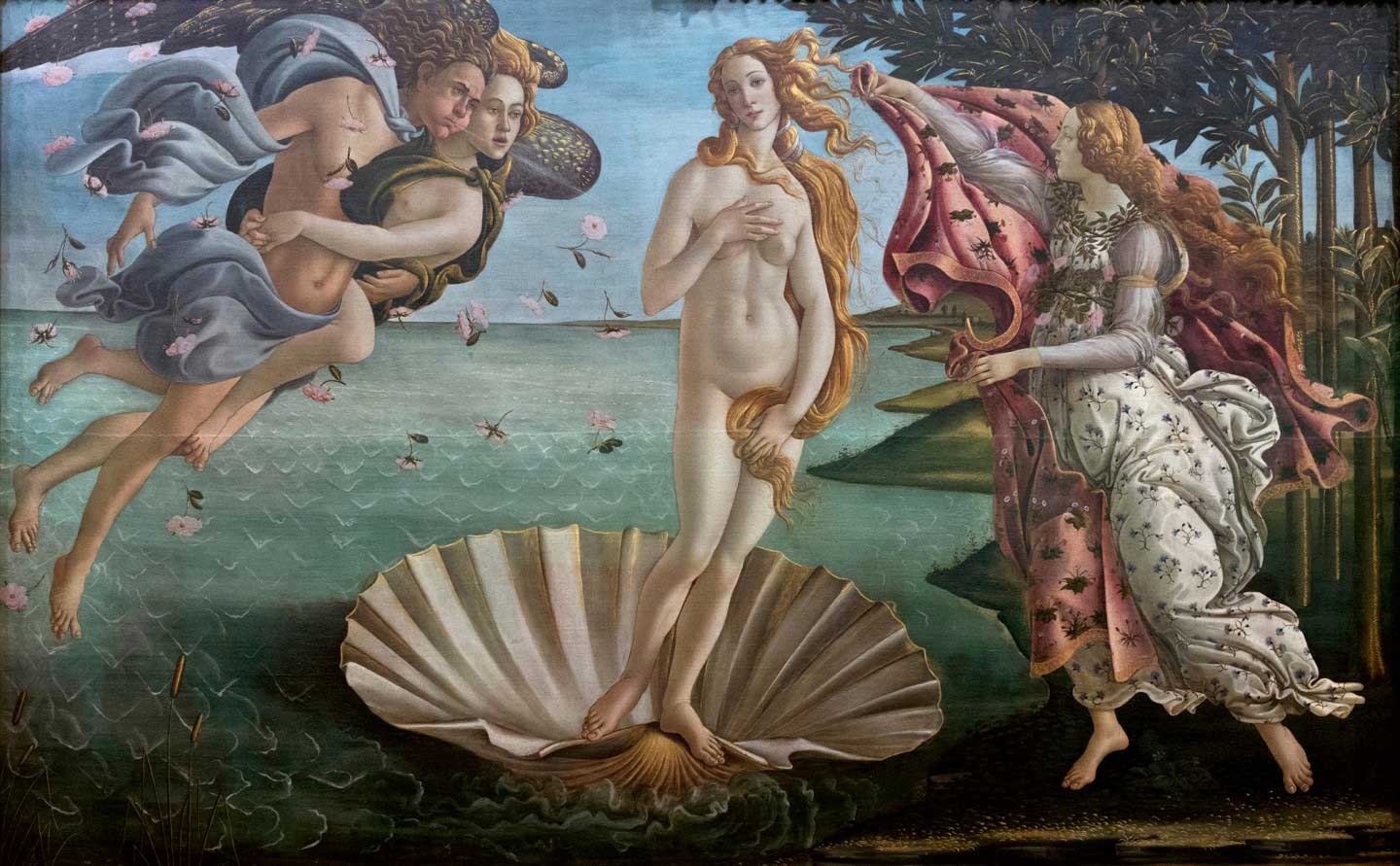
Albeit in a very different context, Young Man Holding a Roundel itself presents an intriguingly complex ideal of male beauty. It is important to remember that when Botticelli painted it, the experience of seeing their own likeness was extremely unfamiliar to most people. Mirrors were rare commodities, so the idea that it might be worthwhile to project this or that image of oneself was only just beginning to gather momentum. Earlier Renaissance portraits of men had tended to emphasise power rather than attractiveness: the sitters are rugged rather than handsome. The most famous example is Piero della Francesca’s portrait of Federico da Montefeltro, that warts-and-all depiction of a mercenary general, painted in profile because that was how the Caesars of old, synonymous with conquest and triumph, had been shown on their coins.
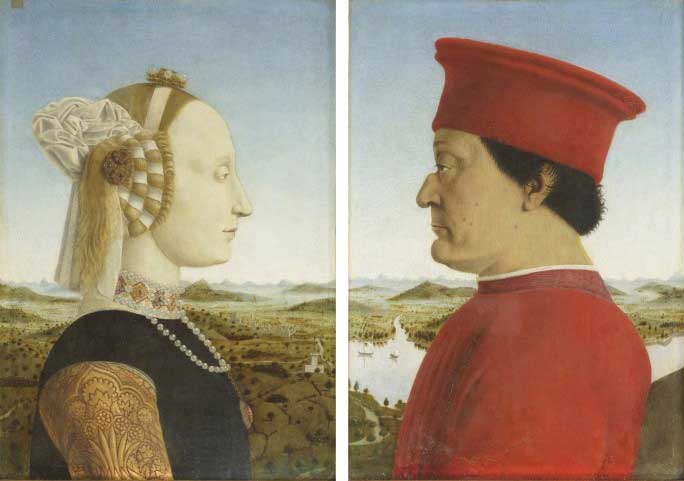
Botticelli’s young man, by contrast, is not to be admired for his military prowess but for his beauty. Perhaps the most beautiful thing about him – notwithstanding the perfect hair, the clear complexion, the chiselled nose, the pursed lips and the fine, forceful chin – is his air of clear-eyed self-possession. As if to underscore the gulf that separates Botticelli’s portrait from earlier Renaissance portraits, the sitter has wheeled through space, renouncing the impersonality of the profile view to face us and look us in the eye. This new approach would soon itself become a Renaissance convention: Leonardo da Vinci adopted it when he painted his most famous portrait (the most famous portrait in the world), the Mona Lisa, circa 1503–17.
For all the assurance of Botticelli’s young man, an air of ambivalence hovers around the picture. The sitter’s self-satisfaction is mingled, a little uneasily perhaps, with his desire to assert his piety. The very act of having one’s portrait painted was indeed, at that time and in that place, bold and novel. But not only that, it was also fraught with spiritual danger. Portraits are, by definition, statements of pride; and pride, in the world of Botticelli and his contemporaries, was one of the seven deadly sins, standing at the opposite end of the moral spectrum to humility, a virtue to which every good Christian was supposed to aspire.
Florentines would be served a stark reminder of such moral imperatives in the late 1490s, when the hellfire Dominican preacher Savonarola staged a coup, seized control of the city and forced the Medici family into exile. Convinced that the end of the world was nigh (1500 was the date he and his followers set for it), Savonarola railed against the pride and worldliness of the Florentine populace and urged mass repentance. He staged huge outdoor bonfires, to which people were encouraged to bring and burn all of their needless luxuries. According to Vasari, Botticelli himself felt so chastened by Savonarola’s sermons that he consigned a number of his own paintings – feeling them to be impure – to the flames.
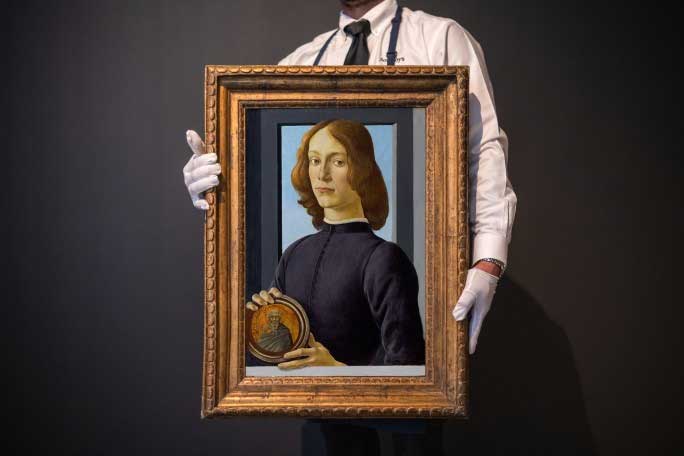
All of which may help to explain why Botticelli’s young man, some 15 years earlier, had chosen to have himself depicted holding a gold-ground roundel of a saint. If portraits were inherently objects of suspicion, how better to guard against accusations of un-Christian vanity than by including a declaration of Christian faith in the portrait itself? It is quite possible that Botticelli’s painting of a beautiful young man survived precisely because of the small gold-ground likeness of a saint that he holds in his hands. Had it not been for that, this image might have joined those others by Botticelli’s hand to have been cast into Savonarola’s “bonfires of the vanities”. It seems that our young man had good judgement, as well as good taste. •
Botticelli’s Young Man Holding a Roundel will be offered at Sotheby’s New York in January 2021.

